In the realm of sewing, precision, and technique are the threads that weave together craftsmanship and creativity. At the heart of this intricate tapestry lies the “overhand stitch,” a fundamental and versatile hand-sewing technique.
This deceptively simple method entails the passing of a threaded needle over the fabric’s edge, creating uniform, closely spaced stitches.
The overhand stitch serves a dual purpose, skillfully joining fabric pieces, providing discreet yet robust seams, and halting the unruly fraying of raw fabric edges.
It is the cornerstone of sewing, applicable across various contexts, from delicate fabric seaming to the refinement of clothing and home decor, bestowing both strength and elegance upon every stitch.
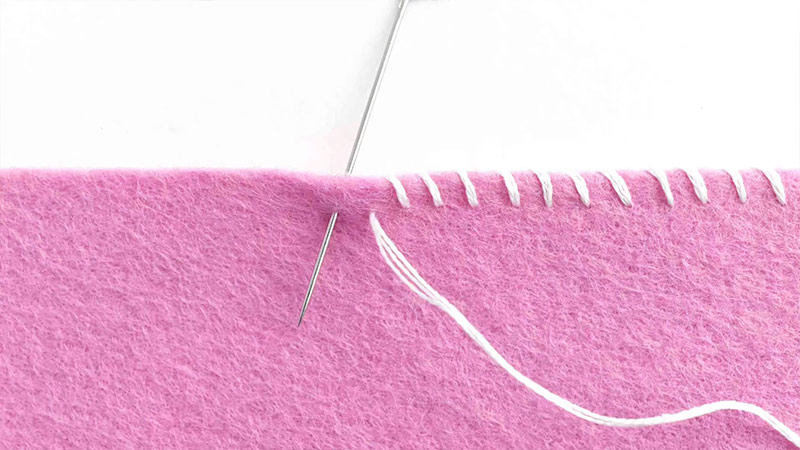
What Does Overhand In Sewing Mean?
In the realm of sewing, “overhand” refers to a fundamental hand-sewing technique known as the “overhand stitch” or “overcast stitch.” This method involves passing a threaded needle over the fabric’s edge, creating small, uniform stitches.
The overhand stitch serves a dual purpose in sewing: it neatly joins two pieces of fabric, creating a discreet and sturdy seam, and it also prevents raw fabric edges from fraying, resulting in a clean and professional finish.
Its versatility makes it an essential skill for sewers, applicable in various contexts, from seaming delicate fabrics to edge finishing and decorative detailing. The overhand stitch elevates the quality and aesthetics of sewing projects.
How Do You Perform the Overhand Stitch in Sewing? 7 Steps
Performing the overhand stitch in sewing is a fundamental skill that’s essential for various sewing projects. This versatile stitch can be used to join fabric pieces, prevent fraying, and add decorative elements to your creations.
Here are step-by-step instructions on how to execute the overhand stitch:
Step 1: Gather Your Materials
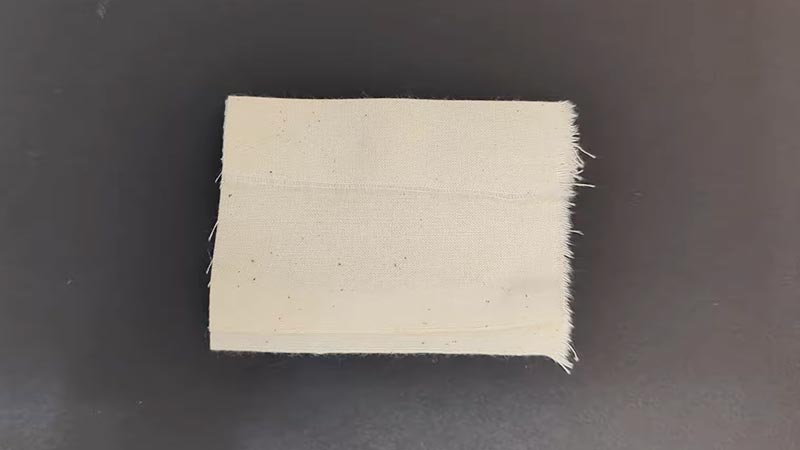
Before you start, gather the materials you’ll need: a sewing needle, thread (matching the fabric or for decorative purposes), and the fabric or fabric pieces you intend to work on.
Step 2: Thread Your Needle
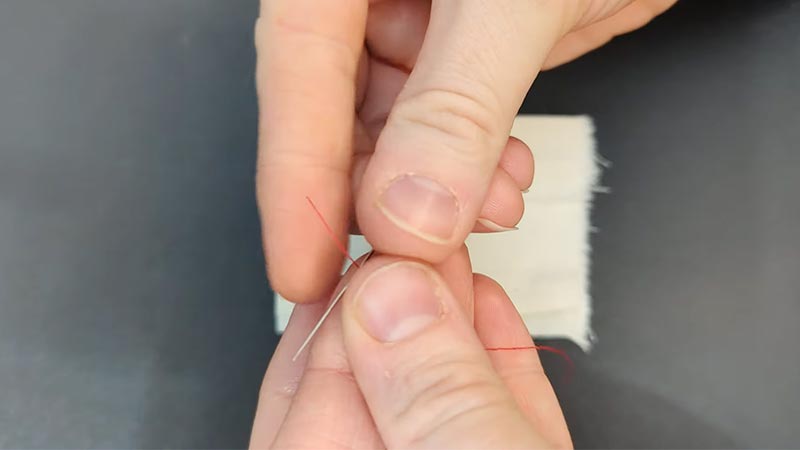
Thread the needle by passing the thread through the eye of the needle. Leave a small tail, and tie a knot at the other end of the thread to secure it.
Step 3: Position Your Fabric
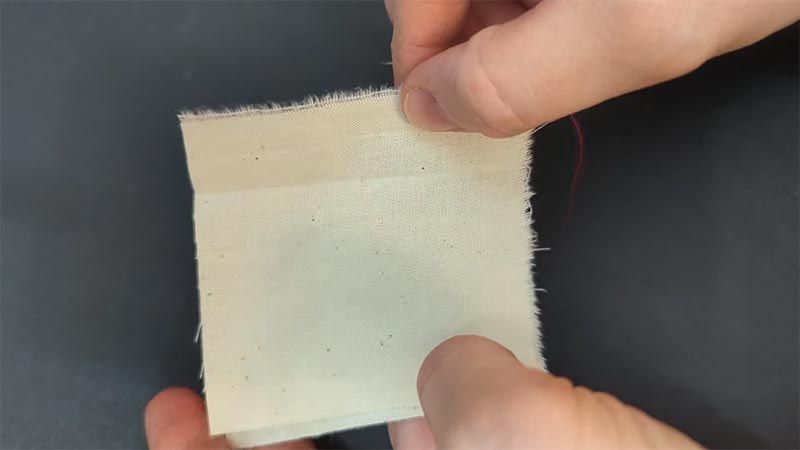
Place the fabric pieces you want to sew together or the fabric with raw edges you wish to finish. Ensure that the edges are aligned correctly for your project.
Step 4: Start the Stitch
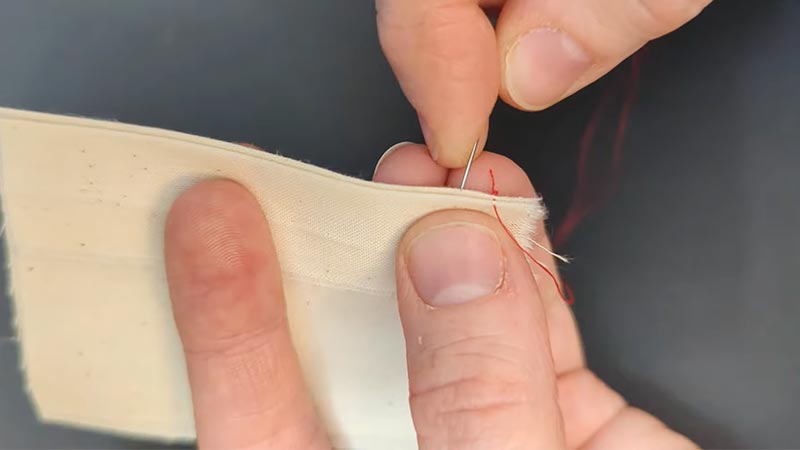
Insert the threaded needle from the backside (wrong side) of the fabric to the front (right side). Begin at one end of the fabric edge. Leave a small tail at the back; this tail will help reinforce the stitch.
Step 5: Stitch Over the Edge
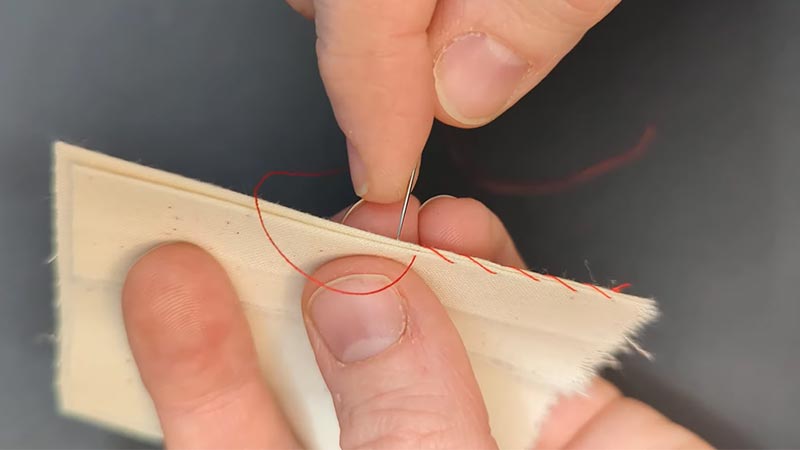
Pass the needle and thread over the fabric edge, from right to left or left to right, depending on your preference. Make sure that your stitches are evenly spaced and of the desired length. The needle should pass through the fabric’s edge, not through the body of the fabric.
Step 6: Continue Stitching
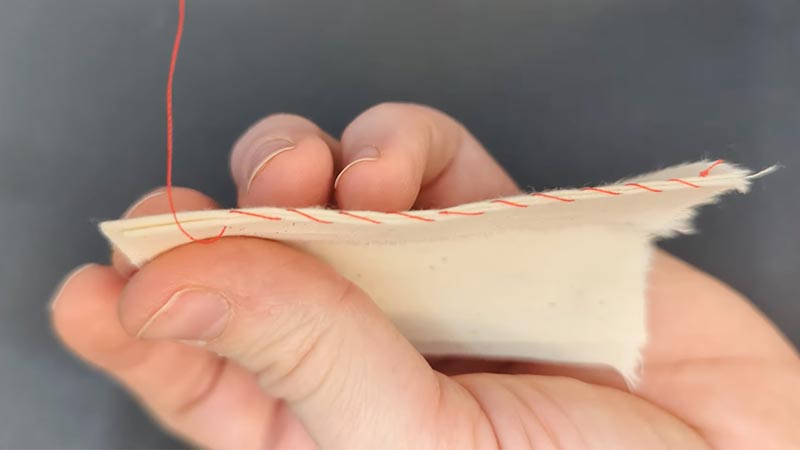
Keep creating overhand stitches along the entire length of the fabric edge. These stitches should be parallel and evenly spaced to ensure a neat and secure finish. Consistency in stitch length and spacing is important for both the strength of the seam and its appearance.
Step 7: Finish and Secure the Stitch
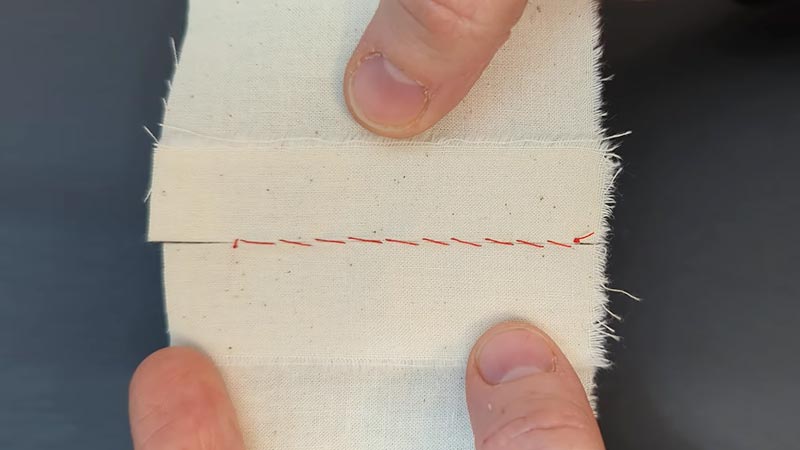
When you reach the end of the fabric edge or have completed the desired length of stitching, it’s time to secure the stitch. You can do this by making a small knot at the end of the thread or by tying it off using the initial tail of the thread.
Trim any excess thread to maintain a clean and tidy appearance.
What Are the Main Uses of the Overhand Stitch?
The overhand stitch in sewing has several main uses, which make it an essential technique for various sewing projects.
Here are the primary applications of the overhand stitch:
Seaming Fabric Pieces
The overhand stitch is commonly used to join two pieces of fabric together. It creates strong and secure seams, ensuring that the fabric pieces remain connected.
This application is crucial in garment construction, quilting, and other sewing projects where the strength of the seam is essential.
Finishing Raw Fabric Edges
One of the main functions of the overhand stitch is to prevent raw fabric edges from fraying. By encasing the raw edges with this stitch, you can achieve a clean and polished look.
It’s particularly useful for hems, cuffs, and any exposed fabric edges in your sewing projects.
Creating Decorative Details
Beyond its utilitarian purposes, the overhand stitch can be used for decorative elements. By varying thread colors or stitch lengths, you can add unique embellishments to your sewing projects. This versatility allows you to get creative and personalize your creations.
Repair and Mending
The overhand stitch is an excellent choice for repairing and mending torn clothing and textiles. It provides a strong and durable mend while maintaining the fabric’s integrity.
Securing Patches and Appliqués
This stitch is commonly used to secure patches or appliqués onto clothing and accessories. It offers durability and a clean finish, ensuring that the patches stay in place.
Creating Clean Seams in Leather and Vinyl Projects
The overhand stitch is suitable for leather and vinyl projects, such as making bags, belts, or upholstery. It provides a strong, secure seam while maintaining the integrity of these materials.
Why Is the Overhand Stitch Important in Sewing Projects?
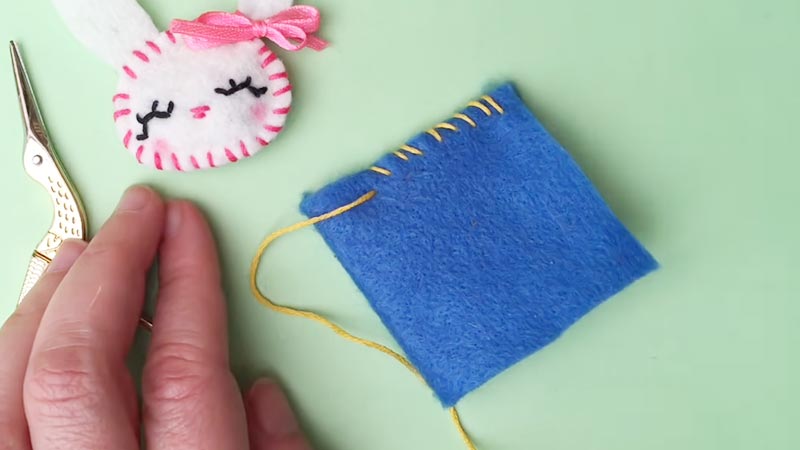
In the world of sewing, the overhand stitch is not just a basic technique; it’s a fundamental skill with vital importance. This simple yet versatile hand-sewing method is indispensable in a wide range of sewing projects.
Here are several key reasons why the overhand stitch is crucial in sewing:
Strength and Durability
The overhand stitch creates strong and secure seams, making it vital in sewing projects where the longevity and resilience of the seam are essential.
Whether you’re sewing garments, quilts, or home decor items, the overhand stitch ensures that fabric pieces stay securely connected, even with regular use and washing.
Preventing Fabric Fraying
One of the primary functions of the overhand stitch is to prevent raw fabric edges from fraying. By encasing the raw edges with this stitch, you not only achieve a neat and polished appearance but also extend the lifespan of the item by keeping the fabric from unraveling.
This is especially crucial for exposed fabric edges like hems and cuffs.
Versatility
The overhand stitch is versatile and adaptable, suitable for various fabric types and sewing contexts. It can be used on delicate or heavy fabrics, making it an essential skill for sewers of all levels. Its adaptability ensures that it can be applied to a wide range of projects.
Professional Finish
The overhand stitch contributes to the overall aesthetics of a sewing project by providing a clean and professional finish. It conceals seams and raw edges, resulting in a polished and refined appearance.
This professional touch is particularly important in projects like clothing and home decor items, where the final look matters as much as the structural integrity.
Decorative Possibilities
While primarily functional, the overhand stitch also offers creative potential. By varying thread colors or stitch lengths, you can add unique embellishments to your sewing projects, allowing for personalization and creative expression.
Repair and Maintenance
The overhand stitch isn’t just for creating new projects; it’s also valuable for repairing and maintaining existing items. Whether you’re mending torn clothing, fixing a ripped seam, or reinforcing the edges of well-loved items, this stitch provides a durable solution, extending the life of your possessions.
Wide Range of Applications
The overhand stitch can be applied in various sewing contexts, from garment construction to quilting, home decor, accessories, and even leather and vinyl projects.
Its adaptability and universal applicability make it a foundational skill for sewers, enabling them to work on diverse projects with confidence.
FAQs
What is the overhand stitch in sewing?
The overhand stitch is a fundamental hand-sewing technique used to join fabric pieces and prevent fraying. It involves passing a threaded needle over the fabric’s edge, creating small, closely spaced stitches.
Can the overhand stitch be used for decorative purposes in sewing?
Answer: Yes, the overhand stitch can be used decoratively by varying thread colors and stitch lengths, adding unique and eye-catching details to sewing projects.
Are there variations of the overhand stitch in sewing?
Yes, you can vary the stitch length, use multiple rows, or change the angle at which the stitch crosses the fabric edge to achieve different effects.
What are some common mistakes to avoid when using the overhand stitch in sewing?
Common mistakes to avoid include uneven tension in stitches, using the wrong thread or needle, and not securing the stitch properly at the beginning and end.
Can the overhand stitch be used with both hand-sewn and machine-sewn projects?
While the overhand stitch is primarily a hand-sewing technique, it can be adapted for use with some sewing machines for specific applications.
To Recap
In the intricate world of sewing, the overhand stitch emerges as a foundational pillar, combining precision and technique to produce craftsmanship of the highest order.
From its humble origins of passing a threaded needle over fabric edges, this stitch has evolved into a versatile and indispensable tool for sewers.
It seamlessly marries form and function, uniting fabric pieces with sturdy yet subtle seams, while also acting as a steadfast guardian against the fraying of raw edges.
Its applications span the spectrum of sewing projects, from the delicate intricacies of haute couture to the functional practicality of everyday garments.
The overhand stitch, with its blend of strength and finesse, epitomizes the artistry of sewing, elevating every project it graces.
Leave a Reply